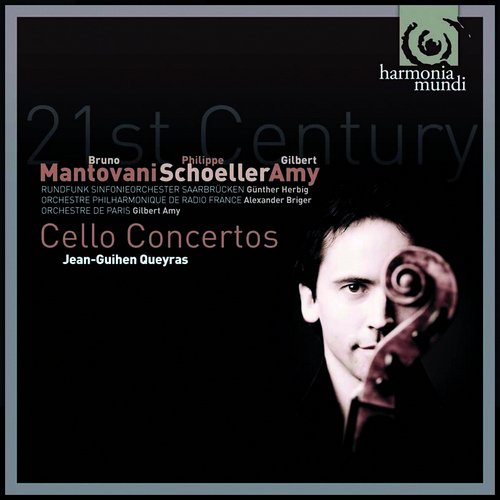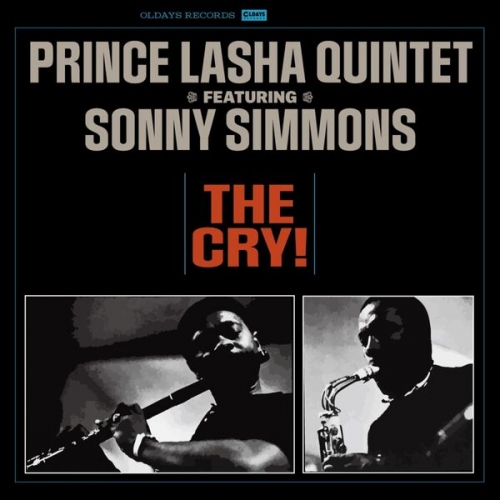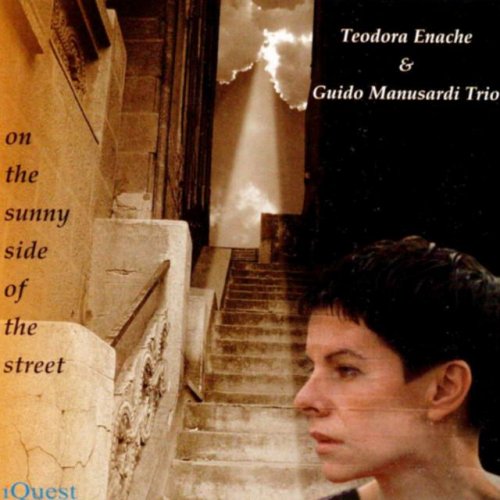Jean-Guihen Queyras - 21st Century Cello Concertos (2009)

Artist: Jean-Guihen Queyras
Title: 21st Century Cello Concertos
Year Of Release: 2009
Label: Harmonia Mundi
Genre: Classical
Quality: FLAC (image+.cue)
Total Time: 68:56
Total Size: 353 Mb
WebSite: Album Preview
Tracklist: Title: 21st Century Cello Concertos
Year Of Release: 2009
Label: Harmonia Mundi
Genre: Classical
Quality: FLAC (image+.cue)
Total Time: 68:56
Total Size: 353 Mb
WebSite: Album Preview
Bruno Mantovani [1974-]
01 - Concerto pour violoncelle et orchestre (2003) [18'36]
Jean-Guihen Queyras, cello
Rundfunk Sinfonieorchester Saarbrücken
Günther Herbig, conductor
Philippe Schoeller [1957-]
The eyes of the wind (2004-5)
02 - I. Largo assai misterioso ma luminoso [8'56]
03 - II. Allegretto subito [3'16]
04 - III. Poco più Allegretto subito [3'12]
05 - IV. A tempo [4'45]
Jean-Guihen Queyras, cello
Orchestre Philharmonique de Radio France
Alexander Briger, conductor
Gilbert Amy [1936-]
Concerto pour violoncelle et orchestre (2000)
06 - I. Modéré, quasi improvisé [3'00]
07 - II. Allegro giusto [6'25]
08 - III. Aérien, suspendu, quasi senza tempo [3'27]
09 - IV. "Solo" [2'35]
10 - V. Assez vite [5'03]
11 - VI. Lent, solennel [4'33]
12 - VII. [4'58]
Jean-Guihen Queyras, cello
Orchestre de Paris
Gilbert Amy, conductor
Canadian-born French cellist Jean-Guihen Queyras has been the featured cello soloist for the Ensemble InterContemporain for some time and appeared in this role on DGG's 1992 recording of Pierre Boulez's the Ligeti Cello Concerto with that ensemble. Queyras, however, doesn't just make contact to new music through composers who come through IRCAM, but also seeks it out on his own; Harmonia Mundi's 21st Century Cello Concertos combines three such commissions from composers Bruno Mantovani, Philippe Schoeller, and Gilbert Amy. When approaching this disc, one must be prepared for the reality that in Europe much "new music" of the twenty first century sounds like that of the twentieth, particularly the new music of the 1960s and '70s. While there are those, like Nicolas Bacri for example, who are finding ways to move on, these composers are in a sense defined by the degree to which they orbit the core experimental literature of the '60s, with Mantovani cycling the furthest away, Schoeller quite a bit closer, and Amy altogether belonging to that tradition.
It is partly due to his total absorption into the milieu of the '60s -- as a participant in that scene and the conductor who took over the Domaine Musicale concerts from Boulez -- that the Amy concerto seems the strongest of these three. Amy's Concerto pour violoncelle et orchestre (2000) is the longest of the concertos, maintains the most consistent overall mood, satisfying formal development, and sense of variety throughout its seven short movements, which effectively add up to a single-movement work, though feeling subdivided into the usual three. Amy's orchestration is beautifully done and the concerto is also reasonably free of "new music clichés," most certainly not the case in Schoeller's The eyes of the wind (2005). This piece is subdivided into four short movements that sound an awful lot like one another, although there is some variability in the third movement. Schoeller uses a relatively small number of gestures throughout the 20-minute work, and a distant, shimmering atmosphere as established in the string section of the ripieno is an important element overall. In the first movement, however, there is a cliché in the form of an intermittent woodblock figure that resembles the "organizing woodblock" of Xenakis' Akrata; after awhile, one wearies of hearing it go "tic-tic-tic" over and over again.
Bruno Mantovani's Concerto pour violoncelle et orchestre (2003) begins like gangbusters with a riotously colorful range of ideas that are expanded well; ultimately, though, these ideas end up being caught in a cycle that grows gradually shorter in a contracting loop, and one loses patience during this section. Then this stops and a new section begins of weaker material until the piece is concluded; the concerto feels seamy and none too finished. While Harmonia Mundi's 21st Century Cello Concertos may not seem like the freshest new music one could encounter in the twenty first century, overall it is high-quality music with some measure of flaws, though at least some measure of provocative and evocative moments as one would expect in such music. All of the pieces provide a considerable showcase for Queyras as soloist, particularly a cadenza in the Amy concerto where he is required to keep a dialogue going between figures in three different ranges of his instrument. Throughout, Queyras is mightily impressive; the recordings are made on three different occasions, with the Mantovani being the most responsive and the Schoeller least so.
It is partly due to his total absorption into the milieu of the '60s -- as a participant in that scene and the conductor who took over the Domaine Musicale concerts from Boulez -- that the Amy concerto seems the strongest of these three. Amy's Concerto pour violoncelle et orchestre (2000) is the longest of the concertos, maintains the most consistent overall mood, satisfying formal development, and sense of variety throughout its seven short movements, which effectively add up to a single-movement work, though feeling subdivided into the usual three. Amy's orchestration is beautifully done and the concerto is also reasonably free of "new music clichés," most certainly not the case in Schoeller's The eyes of the wind (2005). This piece is subdivided into four short movements that sound an awful lot like one another, although there is some variability in the third movement. Schoeller uses a relatively small number of gestures throughout the 20-minute work, and a distant, shimmering atmosphere as established in the string section of the ripieno is an important element overall. In the first movement, however, there is a cliché in the form of an intermittent woodblock figure that resembles the "organizing woodblock" of Xenakis' Akrata; after awhile, one wearies of hearing it go "tic-tic-tic" over and over again.
Bruno Mantovani's Concerto pour violoncelle et orchestre (2003) begins like gangbusters with a riotously colorful range of ideas that are expanded well; ultimately, though, these ideas end up being caught in a cycle that grows gradually shorter in a contracting loop, and one loses patience during this section. Then this stops and a new section begins of weaker material until the piece is concluded; the concerto feels seamy and none too finished. While Harmonia Mundi's 21st Century Cello Concertos may not seem like the freshest new music one could encounter in the twenty first century, overall it is high-quality music with some measure of flaws, though at least some measure of provocative and evocative moments as one would expect in such music. All of the pieces provide a considerable showcase for Queyras as soloist, particularly a cadenza in the Amy concerto where he is required to keep a dialogue going between figures in three different ranges of his instrument. Throughout, Queyras is mightily impressive; the recordings are made on three different occasions, with the Mantovani being the most responsive and the Schoeller least so.

![Limotges - The Burt Bacharach Songbook (2025) [Hi-Res] Limotges - The Burt Bacharach Songbook (2025) [Hi-Res]](https://www.dibpic.com/uploads/posts/2025-12/1766823472_l6enc3v4rcqoc_600.jpg)
![Nigel Price & Alban Claret with Mikele Montolli & Matt Fishwick - Entente Cordiale (2023) [Hi-Res] Nigel Price & Alban Claret with Mikele Montolli & Matt Fishwick - Entente Cordiale (2023) [Hi-Res]](https://www.dibpic.com/uploads/posts/2025-12/1766795538_hf8ta0jsdmh8b_600.jpg)



![The Second Hand Orchestra - SNOW, This Is Christmas (2025) [Hi-Res] The Second Hand Orchestra - SNOW, This Is Christmas (2025) [Hi-Res]](https://img.israbox.com/img/2025-12/29/rduearbt1v1wv82iyir3kdf41.jpg)
![Ben Marc - Who Cares Wins (2025) [Hi-Res] Ben Marc - Who Cares Wins (2025) [Hi-Res]](https://img.israbox.com/img/2025-12/29/nqg428wawx3giymyblda2ld32.jpg)
